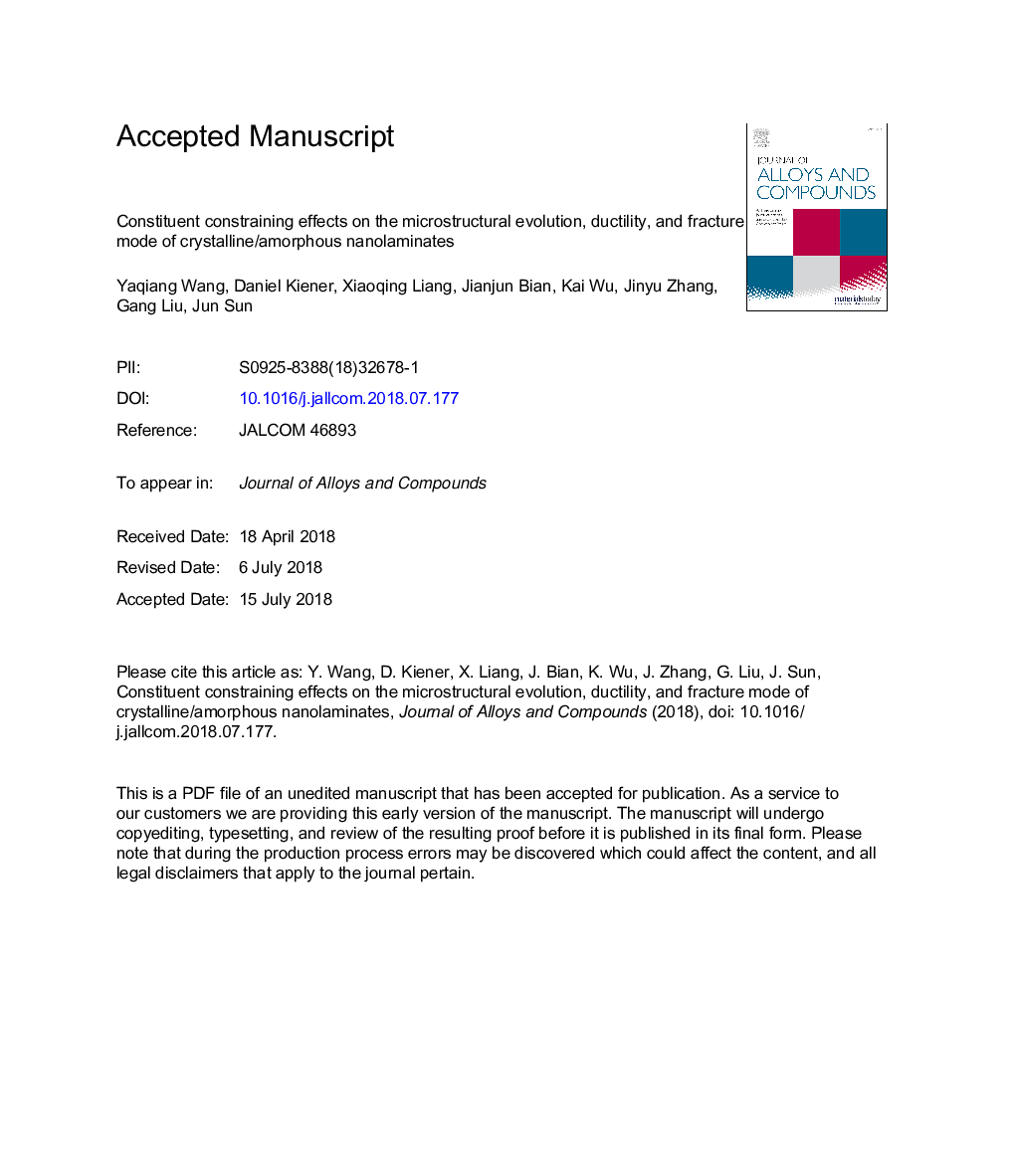| Article ID | Journal | Published Year | Pages | File Type |
|---|---|---|---|---|
| 7990096 | Journal of Alloys and Compounds | 2018 | 30 Pages |
Abstract
Manipulation of the microstructural evolution to achieve controllable deformation and fracture behaviors in crystalline/amorphous nanolaminates is a grand challenge from the perspective of constraining effects of a crystalline on an amorphous phase. In this work, crystalline/amorphous Ag/Cu-Zr and Mo/Cu-Zr nanolaminates were respectively prepared by using magnetron sputtering. The microstructural evolution, tensile ductility, and fracture mode were investigated within a wide range of modulation ratio η (the thickness ratio of amorphous to crystalline layer) from 0.1 to 9.0. The Ag/Cu-Zr nanolaminates showed the tensile ductility firstly decreased and subsequently increased with raising η, leaving a minimum value at the critical η* of â¼1.0. The fracture mode was accordingly transformed from shearing to opening. However, the Mo/Cu-Zr nanolaminates exhibited a different η-dependence where the tensile ductility monotonically increased with η, with fracture mode unchanged as opening. The strong constituent effect on the deformation and fracture of crystalline/amorphous nanolaminates was rationalized in light of the deformation-induced devitrification behaviors in the amorphous layers, which was tuned by the constituent-dependent elastic modulus mismatch and the amorphous layer thickness. Furthermore, the devitrification behaviors were qualitatively interpreted in terms of the image force between constituents and the stress field of a dislocation. These findings manifest a microstructural design by controlled constituents to achieve enhanced mechanical properties in the crystalline/amorphous nanolaminates.
Related Topics
Physical Sciences and Engineering
Materials Science
Metals and Alloys
Authors
Yaqiang Wang, Daniel Kiener, Xiaoqing Liang, Jianjun Bian, Kai Wu, Jinyu Zhang, Gang Liu, Jun Sun,
